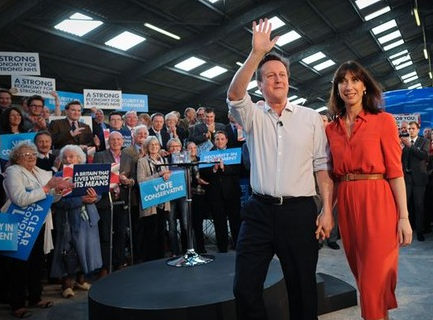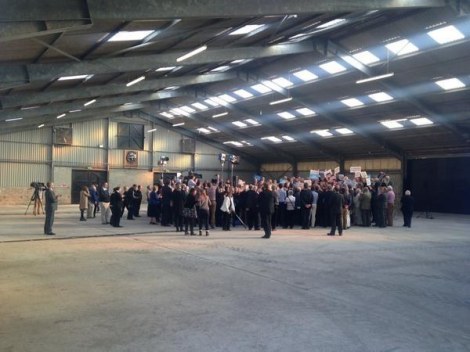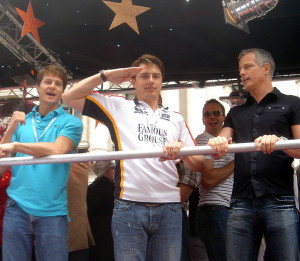Everyone who has ever been camping or walking in the wild with friends can’t have failed to notice how insects seem to prefer some people’s flesh to others. Some unlucky souls are totally covered in itchy red blotches and others are miraculously spared. Sometimes only some family members are affected. My mother has never been bitten by a mosquito (though fleas like her) while my brother and I are often the targets.
This article about why mosquitoes zone in on some people but not others is by Tim Spector, Professor of Genetic Epidemiology at King’s College London and was first published on The Conversation website.
Previous observations have shown a higher mosquito preference for larger people (who produce more CO2), beer drinkers and pregnant women, and although diet was often suspected as a factor, nothing in what we eat (even garlic) stood up to scrutiny.
The authors of a new study in PLOS One claim to have found the answer. They studied the differences in attraction of skin odours to mosquitoes, specifically Aedes aegypti, in a group of brave volunteers drawn from a group of female identical and non-identical twins – part of the large national TwinsUK cohortthat I set up 21 years ago. The reason for using both kinds of twin was to separate the effects of nature and nurture (or genes and environment). In humans this is the only way to get a good estimate of the contribution of genetics to the differences between people.
Our valiant twins put their hands into a specially constructed plexiglass sealed dome where the odours either attract or repel 20 female mosquitoes without being allowed to bite. Each subject was given an attractiveness score compared to the other hand at the other end of the dome. Sure enough the identical twins, who share all their genes, had consistently more similar scores compared to fraternal twins – showing a clear genetic component. This comparison estimated that 67% of the differences between people (called heritability) was down to their genes.
Repel with smell
Why might this be? Many years ago in another twin study we showed that underarm body odour as perceived by human sniffers had a genetic basis – with huge variability in how strong smells were perceived. This showed that we have gene variations controlling both the odours we perceive and the chemical odours we produce. In this way we are similar to mosquitoes because they also have big differences in which odours and chemicals attract and repel them.
Different mosquitoes prefer different parts of our bodies to others. The species Aedes Gambiae prefers the odours of our hands and feet to other bits like groins and armpits. Some animals use their body odour to keep insects away and companies have been trying to unravel what the best chemicals are.
The twin study authors realised that the chemicals could come from glands in our skin or from the billions of microbes on the surface. They discounted the bacteria as a cause as the dogma is that bacteria can’t be influenced genetically. It turns out they were wrong.
Your own personal microbes
We all have very different and unique microbial species in our mouths, guts and on our skin. We share only a small fraction of our microbial species with each other – but still have a unique microbial signature fingerprint. Until recently it was thought this variety was random or due to where we lived. But recent studies, again using UK twins, have shown the importance of genes in influencing which type of gut bacteria flourish inside us – and the same is likely to be true for our skin.
Our 100 trillion microbes outnumber our own human cells ten to one and it turns out we don’t pick them – they pick us – based on our genetic makeup. This means that, just like mosquitoes, certain microbes prefer to coexist with us and other find us rather unpleasant and settle elsewhere.
Our microbes produce many of our vitamins and chemicals in our blood, and far from being the bad guys, their diversity contributes to our health. They are also probably responsible for most of our smells and odours. Even regular hand washing can’t remove these bacteria.
The special smell many of us have between our toes comes from a bacteria called Brevibacteria linens. This is identical to the bacterial species that gives Limburger cheese its distinctive smell.
To demonstrate that bacterial species are the same wherever they grow a team of microbiologists at UCLA performed an unusual experiment. They have started making and eating cheese from human skin – and reportedly this gourmet belly-button food tastes just fine.
So, the next time you get bitten by a mosquito on the ankle – don’t blame bad luck or your cheap repellent – think of the amazing evolutionary match-making processes that hooked up your special mix of genes to a particular community of microbes that feed off your skin and produce a chemical that only certain species of mosquito find irresistible.
Photo by Rick Miller
Note: Pod Academy has other pieces on our bodies as bacteria ecosystems – see also:







Subscribe with…